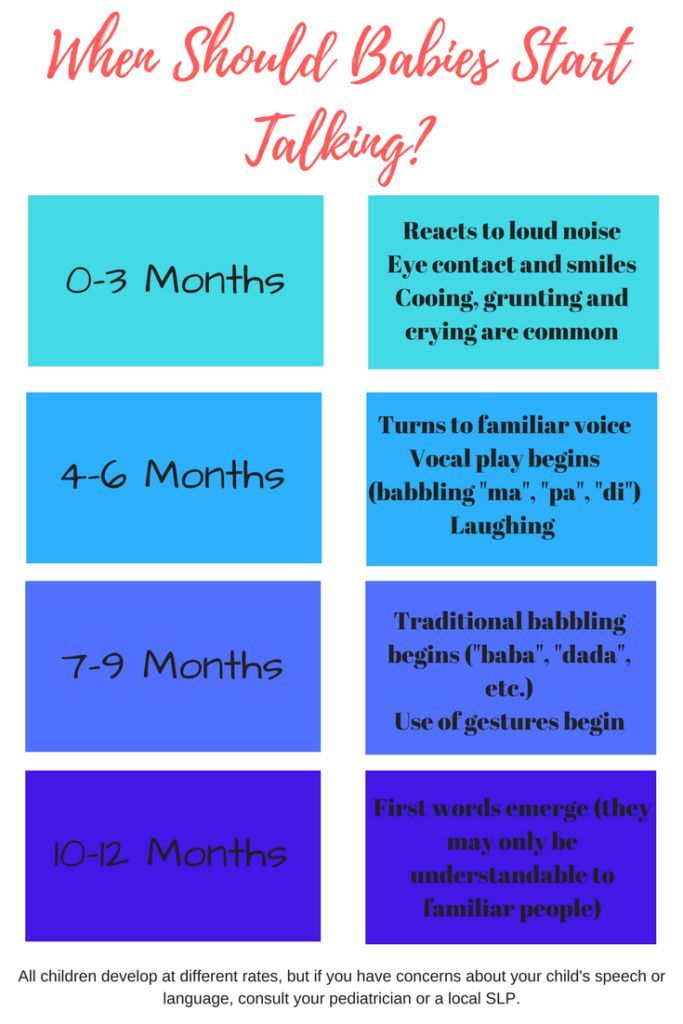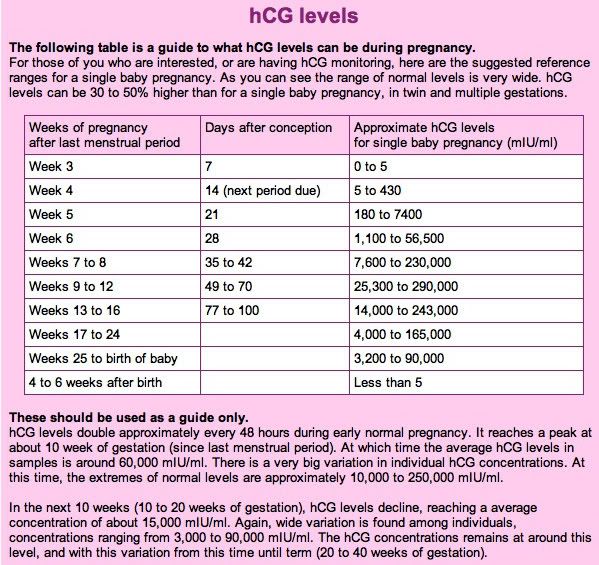Baby sleep method
6 most popular baby sleep-training methods explained
Exhausted new parents and certified sleep consultants swear by some of these sleep-training techniques. Here’s what you need to know before you get started.
For the first few months of his life, Laura Welk’s baby, Greyson, was a dream sleeper. He had regular naps during the day, and all it took was a calming bottle in the evenings and he would be fast asleep. He would wake up only once a night for a feed, and that would last him until morning.
But when he was about three-and-a-half months old, the routine fell apart. “I would feed him, but he wouldn’t be asleep at the end of the feed,” recalls Welk. “I would rock him until he fell asleep and put him down, and then he would wake up 30 minutes later and I would do it all over again.” Desperate for some rest, Welk brought Greyson into bed with her, but then she ended up just lying still, holding a pacifier in his mouth all night long. “I didn’t know anything about sleep,” says Welk. “I didn’t know you couldn’t just rock them to sleep and then put them down.”
When Greyson was four months old, the first-time parents contacted a sleep consultant, who clued them into a few things that were getting in the way of Greyson sleeping well: All the rocking and pacifying were now ingrained in him as sleep associations—or crutches he needed to fall asleep and stay asleep. They decided to sleep-train him.
Sleep training is a loaded phrase, and one that is often used synonymously with letting your baby self-soothe, or “cry it out,” but that’s not the whole picture, says Alanna McGinn, a certified sleep consultant and the founder of Good Night Sleep Site. “It’s more about being able to teach your baby that they are capable of falling asleep independently,” she says. You want your baby to be able to nod off on their own—ideally without nursing, rocking or using a pacifier—because whatever tools they use to fall asleep at bedtime are the same things they’re going to wake up looking for during the night. Yes, this can feel unloving and even downright cruel. You’ll find experts on both sides of the issue: Breastfeeding advocates say it’s normal for babies of all ages to wake up multiple times to nurse, and even the sleep coaches interviewed for this article disagree with how much crying and distress are acceptable.
Yes, this can feel unloving and even downright cruel. You’ll find experts on both sides of the issue: Breastfeeding advocates say it’s normal for babies of all ages to wake up multiple times to nurse, and even the sleep coaches interviewed for this article disagree with how much crying and distress are acceptable.
Recent research has shown that, at least in babies older than six months, sleep training with controlled crying and bedtime fading (both described below) improved babies’ sleep and didn’t lead to increased levels of cortisol. This provides some reassurance that a little bit of crying—if it leads to better sleep—likely won’t do your baby any harm.
Paediatrician Michael Dickinson, president of the Canadian Paediatric Society, advises parents to trust their instincts. “I don’t think there’s any evidence to suggest that it’s psychologically damaging to let your baby cry, but I think people need to be reasonable,” he says. “For most of us, letting your baby cry is five to 10 minutes. ”
”
There’s also no need to institute a regimented cry-it-out plan if what you’re currently doing is working for your family. But good sleep habits never hurt, and being able to fall asleep on one’s own is a necessary life skill. If you sleep-train at a time that’s developmentally appropriate for your baby and with the basic ingredients of healthy sleep in place, you can minimize the amount of crying your baby (and, let’s face it, you) will do.
What’s the right age for sleep training?Most sleep coaches say the ideal time to start sleep training (or promote independent sleep, not necessarily using the cry-it-out method) is based on your baby’s development, but is usually somewhere between four and six months, when your baby hasn’t had much time to get used to nursing or rocking to sleep. At this stage, most babies are also developmentally ready to learn the skill of falling asleep on their own, explains Jennifer Garden, an occupational therapist who runs Sleepdreams in Vancouver. Around four months of age, some babies go through a sleep regression because their sleep cycles change and there are longer periods of lighter sleep per cycle. “It’s a great time to work on independent sleep skills,” says McGinn. Other babies’ slumber derails around this time because they are working on new skills, like moving around and rolling. Some parents choose to wait until things settle down before embarking on a sleep-training method, but you don’t have to, says McGinn.
Around four months of age, some babies go through a sleep regression because their sleep cycles change and there are longer periods of lighter sleep per cycle. “It’s a great time to work on independent sleep skills,” says McGinn. Other babies’ slumber derails around this time because they are working on new skills, like moving around and rolling. Some parents choose to wait until things settle down before embarking on a sleep-training method, but you don’t have to, says McGinn.
If your baby is older than six months, don’t worry, McGinn says: “It’s never too late to develop good sleep habits.” Dickinson says he finds nine months to be a bit of a sweet spot for parents in terms of getting babies to sleep through the night. “They are at a good age for understanding routines and don’t need to eat during the night,” he explains.
The age of your baby might determine what kind of sleep-training method you choose, though. You could try a gentle shush-pat technique with a five-month-old, but you’ll likely have to leave a one-year-old in the crib as they protest (cry or scream) about the new bedtime arrangement. Don’t attempt a formal sleep-training method before four months, until your baby is able to go longer in between feeds and their circadian rhythm starts to develop. (Many babies this age still feed in the night—contrary to popular thinking, sleep training isn’t synonymous with night weaning.) Dickinson says that many four-month-old babies are biologically able to go through the night without a feed, but that doesn’t mean you shouldn’t respond and feed them if other methods of calming them aren’t working. Since every situation is different, we recommend checking with your doctor before withholding your baby’s night-time feeds.
Don’t attempt a formal sleep-training method before four months, until your baby is able to go longer in between feeds and their circadian rhythm starts to develop. (Many babies this age still feed in the night—contrary to popular thinking, sleep training isn’t synonymous with night weaning.) Dickinson says that many four-month-old babies are biologically able to go through the night without a feed, but that doesn’t mean you shouldn’t respond and feed them if other methods of calming them aren’t working. Since every situation is different, we recommend checking with your doctor before withholding your baby’s night-time feeds.
Before getting started
Before you even think about “training” your baby to fall asleep on their own, make sure you’re following a regular schedule and putting them to bed at a consistent time each night (hint: early is usually better, typically around 7 or 8 p.m.). Starting at about two months old, it’s a good idea to try to put them down drowsy but awake whenever you can, just to get them (and you) used to it, even if they fuss a bit.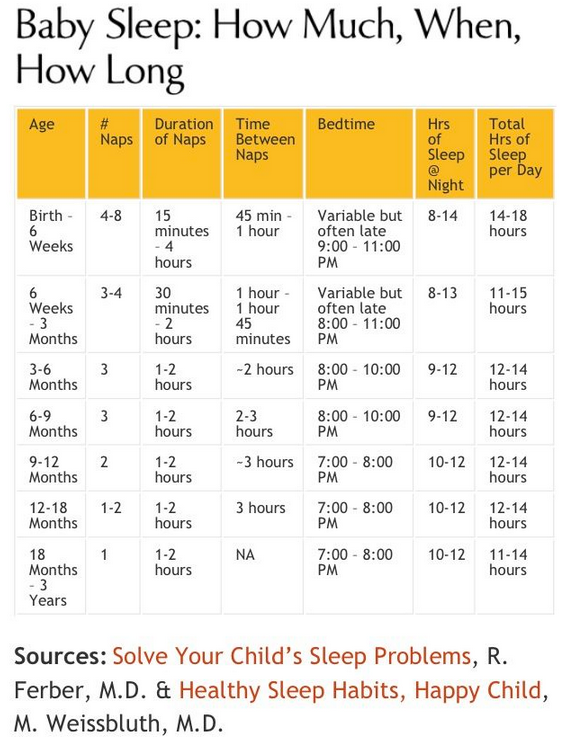 Make sure that they’ve been awake for an appropriate amount of time before bed (an over- or under-tired baby will have trouble falling asleep), and establish a calming and consistent bedtime routine, like a feed, bath or massage followed by pyjamas and stories or songs. Some experts recommend feeding at the beginning of the routine to avoid having the baby associate the feeding with falling asleep. Ideally, your baby won’t have started to nod off at any point during your bedtime routine. “You really want to make sure your baby is primed for sleep,” says Pamela Mitelman, a psychologist in Montreal who specializes in infant and child sleep. Be conscious, too, of filling their daytime awake periods with enough activity and stimulation, says Garden. “Kids need to be moving in all sorts of ways when they are awake, not just sitting in a bouncy chair,” she says.
Make sure that they’ve been awake for an appropriate amount of time before bed (an over- or under-tired baby will have trouble falling asleep), and establish a calming and consistent bedtime routine, like a feed, bath or massage followed by pyjamas and stories or songs. Some experts recommend feeding at the beginning of the routine to avoid having the baby associate the feeding with falling asleep. Ideally, your baby won’t have started to nod off at any point during your bedtime routine. “You really want to make sure your baby is primed for sleep,” says Pamela Mitelman, a psychologist in Montreal who specializes in infant and child sleep. Be conscious, too, of filling their daytime awake periods with enough activity and stimulation, says Garden. “Kids need to be moving in all sorts of ways when they are awake, not just sitting in a bouncy chair,” she says.
Once you’ve got all the ingredients of a good night’s sleep in place and you’re ready to let your baby learn how to fall asleep on their own, here are six common methods to consider.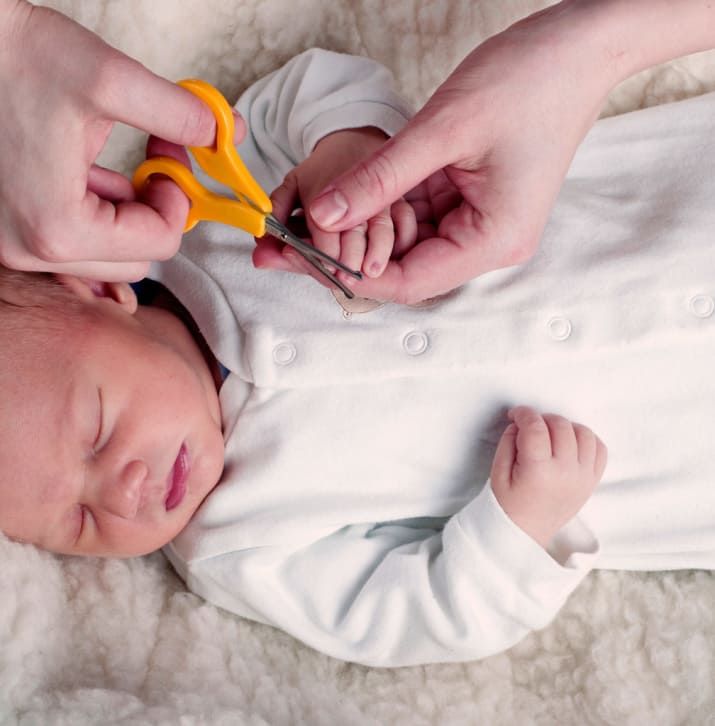
1. Check and console (also known as the Ferber method, graduated extinction, progressive waiting or the interval method)
There are many variations on the check-and-console method, but the general principles are the same: You want to continue to check on your baby at preset intervals but never feed or rock them to sleep, as that would mean they aren’t falling asleep on their own.
After going through your bedtime routine, put your baby in their crib, leave the room and wait a specific amount of time (say, a minute). Then go in and reassure your baby with words like “Mommy loves you” or some kind of touch, such as a rub or pat. McGinn says it’s preferable not to pick the baby up. Garden, on the other hand, reserves this method for babies seven months and older. (In her opinion, younger babies require a parental presence so they know they haven’t been abandoned, especially if they’ve worked themselves up into a frenzy.)
Continue to leave and then check on them, increasing the amount of time between visits until you’ve reached about 10 or 15 minutes, and then just keep at it until they fall asleep. When they wake up, you start the check-and-console intervals all over again.
When they wake up, you start the check-and-console intervals all over again.
This technique could take up to a week to work, but you should start seeing some progress after a few nights. Many experts recommend keeping a sleep-training log to help reassure yourself. Some parents find that going in to the room aggravates the baby even more and might consider a more direct method, like full extinction.
2. Extinction, or cry it out (CIO)
The idea behind extinction (or full extinction to differentiate it from graduated extinction) is that you want to extinguish the behaviour (crying) by not responding to it. As with the check-and-console method, go through your bedtime routine, put them in their crib awake, say good night and walk out. This is certainly the most controversial sleep-training method, and even experts disagree on what you should do next—it all depends on what stage your baby is at developmentally, as well as what works for the parents.
McGinn, for example, suggests leaving your baby until the morning, unless you’ve predetermined that they still need a feed in the night. “That first night can be rough,” says McGinn. “They could be up every hour crying.”
“That first night can be rough,” says McGinn. “They could be up every hour crying.”
Mitelman, on the other hand, recommends that parents wait for at least one or two wake-ups before going back into the room. Then, if the baby wakes up after midnight, she believes it’s OK to go back in, comfort your baby for a few minutes and then leave again. She also supports scheduling in regular night-time feeds if your baby still needs them.
Parents are often hesitant to go this route, worried about how much crying will be involved. While McGinn doesn’t deny it can be difficult at first, she finds parents are often surprised by how quickly it works. “Yes, there is a lot of crying, but it’s short term,” she says. “You might get a lot of crying for two to three nights, but then every night is less and less.” She says you should see significant improvement with this method by night three or four but adds that it’s important to try it for a week before determining that it’s not working.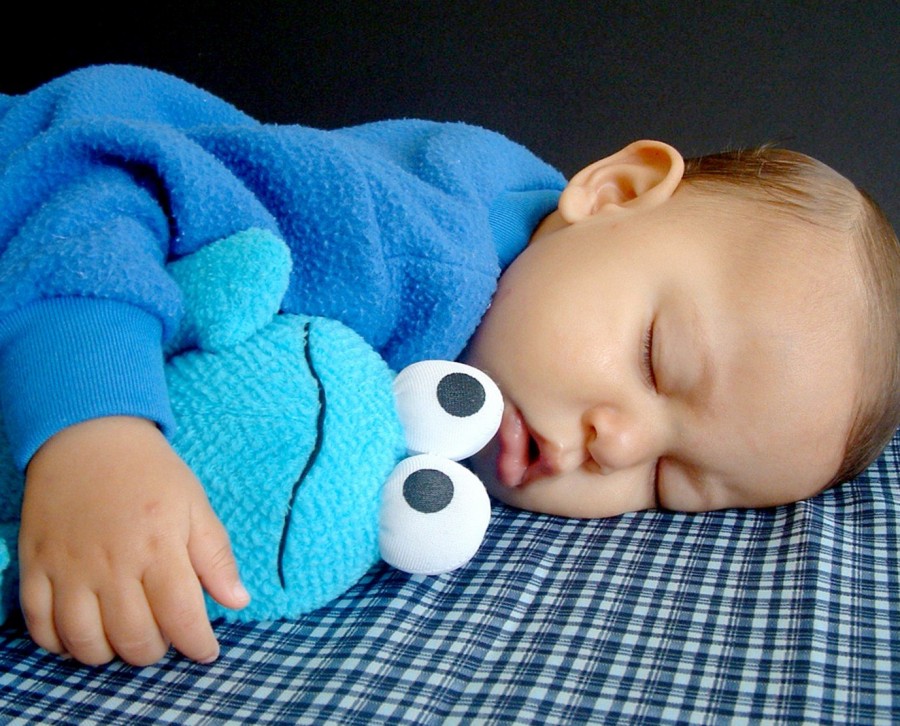
3. Chair method
This is a very gradual sleep-training method ( McGinn gives her clients a two-week plan for implementation) and requires a lot of discipline on the part of the parents. Again, you prep your baby for bed, but instead of leaving the room, you sit in a chair next to the crib. When they fall asleep, leave the room, but every time they wake up, sit back down in the chair until they fall back asleep. Every few nights, move the chair further and further away until you’re out of the room.
“The pro of this method is that mom or dad is there and present,” says McGinn. “But the con is, there will likely still be some crying, and now baby is watching you watch them cry. It can be really hard to be consistent with this method.”
Mitelman doesn’t recommend this method to her clients because she says having a parent in the room but not responding to the baby is confusing and may also be too much stimulation, depending on the baby’s age and developmental stage. “They can get so escalated to the point that they can’t calm themselves down,” she says.
“They can get so escalated to the point that they can’t calm themselves down,” she says.
4. Pick up, put down and shush-pat
For babies younger than seven months, Garden prefers an approach where you stay in the room without giving them too much help to fall asleep. For example, you could stand over their crib and shush them, pat their tummy or apply pressure to calm and reassure them.
Another option is to let them fuss for a bit, but when they start to escalate, pick them up to soothe them but put them back down before they fall asleep. “Our job is to help calm the child, and their job is to fall asleep,” says Garden.
While these methods can work really well for younger babies, after six or seven months, your presence might make your baby more upset, and picking them up and putting them back down will likely be too much stimulation.
5. Bedtime-routine fading
With the fading technique, continue with whatever method you were using to help your baby fall asleep (such as rocking or nursing), but decrease the amount of time you spend doing it until, in theory, you don’t have to do it at all.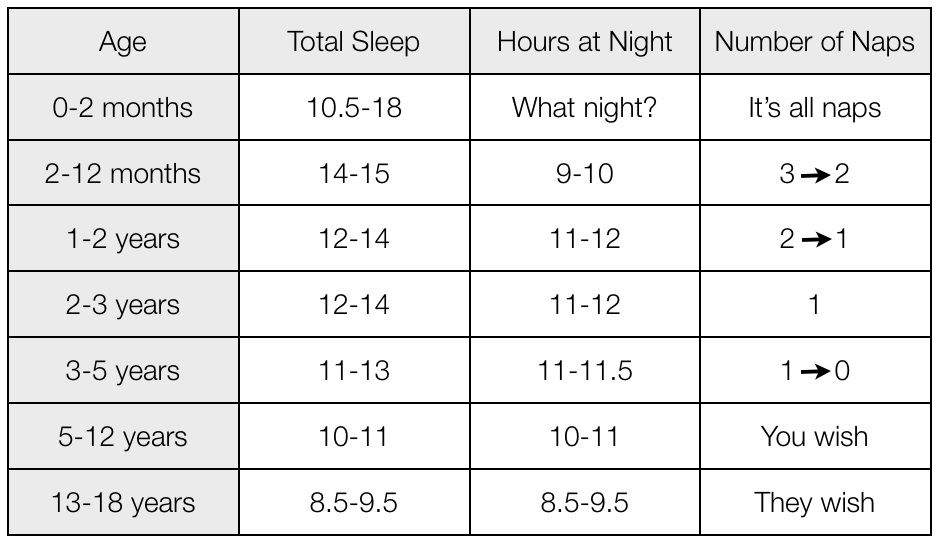 This is a great technique for minimizing crying, but unfortunately, many parents find it difficult to sustain. “There has to be an end in sight,” explains Mitelman. “For example, we’ll meet this need for five to seven days and then we’ll pull back a little bit.” But if you’re willing to stick to the plan and get your baby to the end goal of going to bed without your assistance, Mitelman says it’s worth a try. “Whichever way the child can get to sleep independently is fine because that’s the key ingredient to sleeping through the night.”
This is a great technique for minimizing crying, but unfortunately, many parents find it difficult to sustain. “There has to be an end in sight,” explains Mitelman. “For example, we’ll meet this need for five to seven days and then we’ll pull back a little bit.” But if you’re willing to stick to the plan and get your baby to the end goal of going to bed without your assistance, Mitelman says it’s worth a try. “Whichever way the child can get to sleep independently is fine because that’s the key ingredient to sleeping through the night.”
6. Bedtime-hour fading
Not to be confused with the bedtime-routine fading technique described above, bedtime-hour fading involves putting your baby into the crib at the time they usually end up dozing off, and making that their new bedtime for a couple of nights, and then gradually moving it to an earlier time. For example, say you always put your baby down at for the night at 7:30 p.m., but they tend to fuss or cry in the crib for 20 minutes or more, until they finally nod off around eight. This means 7:50 to 8 p.m. is actually their “natural bedtime,” even though you’d like it to be earlier. To figure out when your baby naturally falls asleep, keep a diary for a few nights to track when they finally settle for the night. (Using a video monitor can help with this.) A few nights later, move the whole routine 15 minutes earlier. Continue moving the bedtime earlier by 15 minutes each night (if needed) until your baby has shifted their old habits to nod off at the desired time instead of the later one.
This means 7:50 to 8 p.m. is actually their “natural bedtime,” even though you’d like it to be earlier. To figure out when your baby naturally falls asleep, keep a diary for a few nights to track when they finally settle for the night. (Using a video monitor can help with this.) A few nights later, move the whole routine 15 minutes earlier. Continue moving the bedtime earlier by 15 minutes each night (if needed) until your baby has shifted their old habits to nod off at the desired time instead of the later one.
While McGinn doesn’t use this technique with her clients, she says the trick with any training routine is to be very consistent and commit to moving the bedtime earlier. “It’s easy to become inconsistent with things or give up and then the child has a really late bedtime,” says McGinn
The greater good
On the advice of a sleep consultant, Welk and her husband took away Greyson’s pacifier, moved his bottle to before his bath (so he wouldn’t associate feeding with going to sleep) and chose to start with a very gentle method (because he was only four months old at the time). Greyson’s dad put him in the crib and stood next to him, patting him until he fell asleep, for about a week. That went well, and then they started leaving him immediately after putting him in the crib without patting him fully to sleep. “For about a month, he would cry or fuss every night for 10 to 15 minutes before falling asleep,” recalls Welk. It was hard to hear her baby cry, but she feels confident that it was for the greater good because they were both well rested and happy during the day. Now, Greyson is 11 months old and a champ sleeper, having weaned himself from night feeds at seven months.
Greyson’s dad put him in the crib and stood next to him, patting him until he fell asleep, for about a week. That went well, and then they started leaving him immediately after putting him in the crib without patting him fully to sleep. “For about a month, he would cry or fuss every night for 10 to 15 minutes before falling asleep,” recalls Welk. It was hard to hear her baby cry, but she feels confident that it was for the greater good because they were both well rested and happy during the day. Now, Greyson is 11 months old and a champ sleeper, having weaned himself from night feeds at seven months.
If you’re on the fence about sleep training, it can be helpful to think of it this way: What is my baby’s developmental need right now? “At 11 months, they don’t need to eat during the night but they do need consistent sleep,” says Garden. Yes, those nights of crying are heartbreaking. But chances are, if you’re considering sleep training, it’s because what you’re currently doing isn’t working for you.
As your baby gets older and their sleep needs change, make sure that you’re adjusting wake times, naps and bedtimes accordingly to help them continue to easily fall asleep and stay asleep. Some parents think of sleep training as a “one-and-done” endeavour: You endure a lot of crying for a few days and your prize is a perfect sleeper. But it’s really a lifestyle change—once your child has the skills to fall asleep, they’ll still need routines, consistency and help adapting when life throws curveballs, like starting daycare, the arrival of a new sibling or going on a trip (where they may have to sleep in a different space or crib). Colds and illnesses, as well as time changes, can also throw a wrench in your perfect schedule. The trick here is to get back on track as soon as possible. If you start allowing or enabling the old, bad habits and sleep associations, it will take longer to return to the regular routine.
McGinn likens it to riding a bike: Sure, kids are a little wobbly when you get the bike out after the winter, but soon they’re riding like pros again. “You never have to re-teach the skill of falling asleep,” she says.
“You never have to re-teach the skill of falling asleep,” she says.
Do your research, talk to your doctor and if you’re overwhelmed, consider hiring a sleep consultant or taking a workshop. Your baby’s sleep might seem like a mystery to you, but there are people who understand the complexities and can help. While not everyone agrees with every approach, no one would argue with the benefits of a good night’s sleep, for babies and exhausted parents alike.
Watch Baby Grow!
Subscribe to Today’s Parent’s baby newsletter and find out what to expect for every stage and milestone, from birth to two years.- Email*
- Baby's due/birth date*
Month223456789101112
Day12345678910111213141516171819202122232425262728293031
Year2024202320222021
- CAPTCHA
- Consent*
Yes, I would like to receive Today's Parent's Baby newsletter. I understand I can unsubscribe at any time.
 **
**
FILED UNDER: Newborn care Newborn sleep service seo Sleep problems Sleep training
Sleep Training: Definition & Techniques
Babies sleep a lot. For their first year of life, babies need approximately 9 to 12 hours of sleep per day, in addition to regular naps. The only problem is they tend to sleep in spurts, a combination of sleeping at night and napping during the day.
It takes babies around three to six months to develop their internal body clock, or circadian rhythm. At this point, they’ll naturally want to sleep more at night and be awake more during the day. For sleepy parents who want to encourage their little ones to spend more of their nighttime sleep consistently asleep, sleep training may be the key.
What Is Sleep Training?
The goal of sleep training is for your baby to be comfortable sleeping for several hours through the night on their own. If they wake up, they’ll learn to self-soothe and fall back asleep.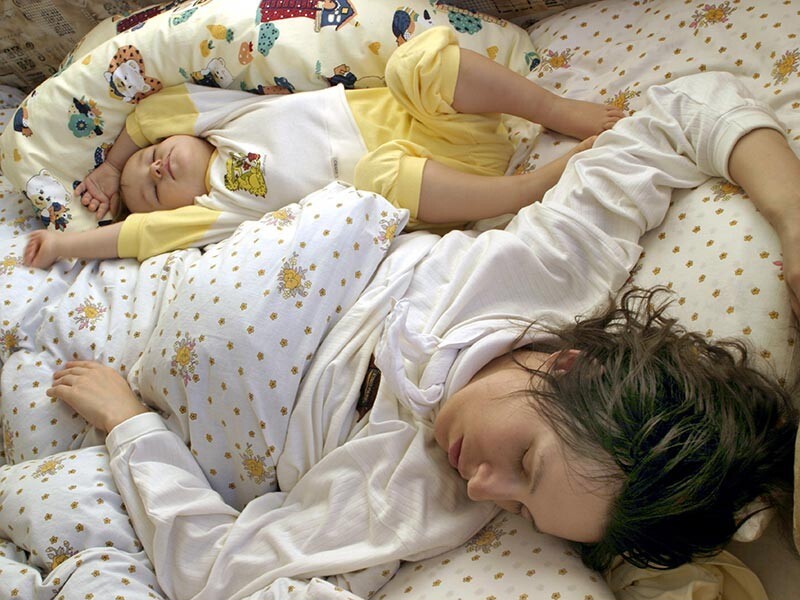 There are several sleep training methods parents can use developed by pediatricians and sleep experts.
There are several sleep training methods parents can use developed by pediatricians and sleep experts.
Once they’ve been sleep trained, babies can sleep 9-12 hours at night. With more restful sleep, they’ll feel better during the day, as will their parents — which can improve the overall quality-of-life for the family. Little ones will still need their naps during the day, but tired parents (and especially moms still recovering from pregnancy insomnia) can enjoy more restful sleep.
With some sleep training methods, babies can be sleeping on their own within a matter of days. For others, particularly gentler methods that minimize crying, the process can take longer. There is no right way to sleep train, but staying consistent — and patient — are key to success.
When To Start Sleep Training
Babies aren’t ready for sleep training until they’re 4-6 months old. Before then, they haven’t developed the circadian rhythms that will help them sleep through the night. At this age, they’re able to pick up skills like sleeping independently, and they haven’t gotten too used to you rocking them to sleep.
Six months is generally agreed to be a good time to start sleep training, although you can begin as early as four months, or as late as nine months. Nine months can be better for some babies since they no longer need to eat during the night at this age.
It can be difficult to know when your baby is ready for sleep training. However, if your baby starts to fall asleep on their own at night (even if they wake up throughout the night), they’re most likely ready.
Just as there’s no exact right age to begin sleep training, you also don’t have to sleep train. Babies will eventually learn to sleep on their own. However, sleep training is effective and offers significant benefits to both babies and parents, with no evidence of negative long-term effects.
When infants can’t sleep well, it’s distressing to both the baby and the parents. Children may develop pediatric insomnia, and parents are at greater risk of depression, stress, and poor health. On the other hand, when babies get more sleep, parents feel better, and so do their babies.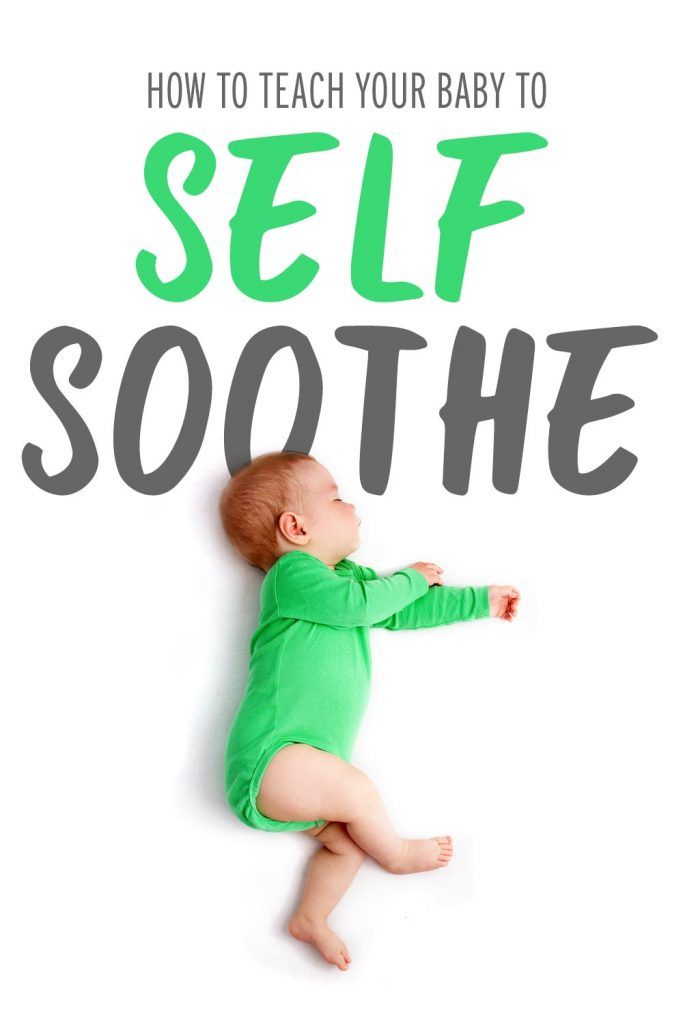 Babies who get more restful sleep have fewer developmental and behavioral issues, and have a happier temperament overall.
Babies who get more restful sleep have fewer developmental and behavioral issues, and have a happier temperament overall.
7 Tips To Keep in Mind as You Sleep Train Your Infant or Toddler
Whatever sleep training method you choose, these tips can help you stay calm and consistent throughout the process.
- Allow your baby to learn to self-soothe. By putting your baby down when they’re getting drowsy, they’ll get in the habit of falling asleep on their own. Then, when they wake up at night, they’re more equipped to put themselves back to sleep without your help because they’ve practiced.
- Separate yourself from your baby. Your baby does not have to have their own bedroom to sleep train, but it’s important that you find a way to separate yourself from them so they can learn to self-soothe.
- Stick to a consistent bedtime. Consistency is essential in sleep training. You’re creating a whole new schedule for your child. Create consistency by picking a bedtime, and sticking to it every night.

- The “right” way to sleep train is the right way for you and your baby. There are several different approaches to sleep training, as we’ll get into below. Some are more suitable for some families, while some work better for others. There is no best way to sleep train; it’s just finding what works for your child.
- Know that there will be some rough nights. Sleep training can be a bumpy road. There may be times when one parent is out of town, or your baby is feeling under the weather. Take a deep breath, try to be patient, and accept it as part of the process.
- You will ultimately be successful. Most babies sleep through the night by nine months old, so don’t get discouraged! Keep a sleep training diary to track your progress (and the bumpy spots along the way) so you can stay positive and consistent.
- Sleep training is a tool you can use as your child’s routine changes. As children grow and develop, start attending school, or experience other changes in life, they may need adjustments to their sleep schedule.
 When that happens, you can sleep train them again.
When that happens, you can sleep train them again.
What Are the Different Methods of Sleep Training?
Parents use various methods of sleep training parents, and all of them can be effective. The best method for your family will depend on what you and your baby are most comfortable with.
The Cry It Out Method
The Cry It Out sleep training method is also known as extinction, full extinction, or CIO for short. With this method, parents take their baby through a bedtime routine, cuddle with them and give them a kiss goodnight, and then leave the room. If the baby cries, the parent does not respond. Eventually, the baby tires themselves out from crying or self-soothes back to sleep.
This method is well-known, and in some cases, notorious. Many parents feel uncomfortable with letting their baby cry out and not comforting them. They worry it will elevate the baby’s stress levels, cause trauma, and lead the child to think they can’t rely on their parents to be there for them.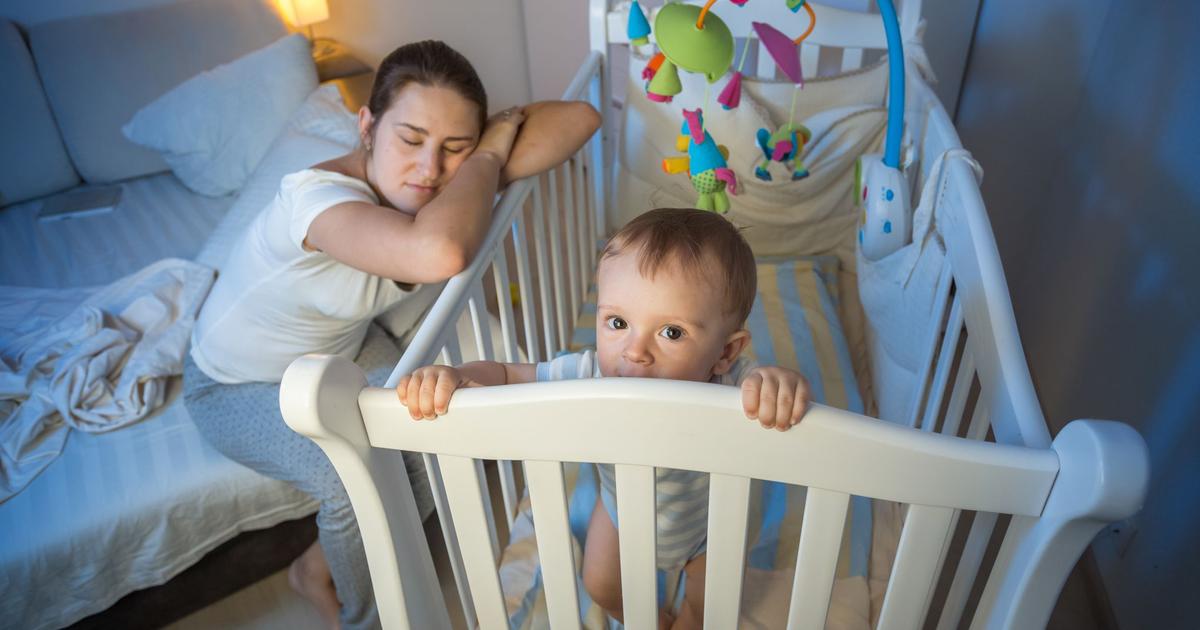 It’s also very difficult for many parents to hear their baby cry and not be able to help them.
It’s also very difficult for many parents to hear their baby cry and not be able to help them.
On the other hand, proponents say that it works, and quickly. Many parents say their baby is sleep trained within a few days with the CIO method.
The Ferber Method
The Ferber Method is similar to Cry It Out, but more gradual, hence its nicknames of “graduated extinction,” progressive waiting, and the interval method.
With this method, parents follow the same routine of taking their baby through a bedtime ritual, cuddling them and kissing them goodnight, and then leaving the room and shutting the door. For the first few nights, the parents immediately return whenever the baby cries, patting them and ensuring they’re calm before leaving the room again. After the first few nights, parents gradually increase the amount of time they let the baby cry before reentering the room, eventually reaching a point where the baby self-soothes.
This method appeals to parents who are uncomfortable with the black-and-white nature of the CIO method, but some still feel it can be traumatizing for the baby. However, studies of the Ferber method have found no evidence of long-term negative effects on a child’s emotions, stress, behavior, or attachment to their parent.
However, studies of the Ferber method have found no evidence of long-term negative effects on a child’s emotions, stress, behavior, or attachment to their parent.
If you choose this method, be aware that your baby will cry at some point and you won’t be able to respond. If that makes you uncomfortable, consider another method.
The Check and Console Method
A variation of the Ferber method, the Check and Console method encourages parents to check on their baby and console them before they even start to cry.
For example, on the first few nights, parents may leave the room and enter a minute or two later to tell them they love them or to give them a soft pat. Parents keep leaving the room and checking back in, gradually increasing the intervals to about 15 minutes, until they fall asleep.
This method can take longer — up to a week — and requires more involvement from the parents. Be attentive to how your baby responds with the Check and Console method. Checking in may excite them and make them more upset when you leave, in which case another method may be a better option.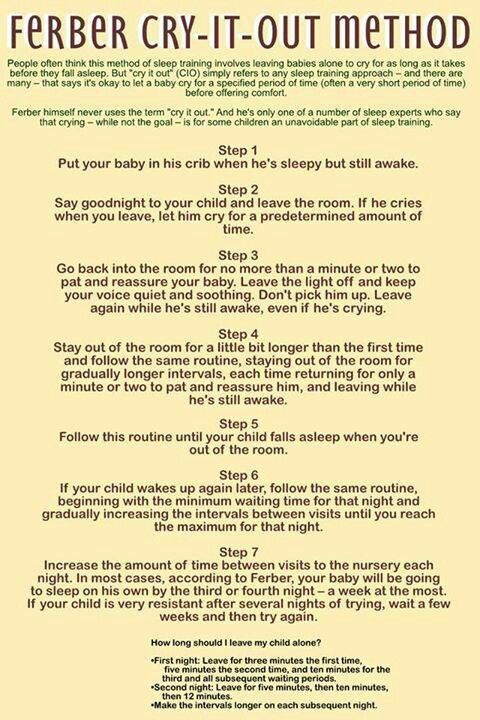
The Fading Method
The Fading method, also known as “camping out,” encourages parents to stay in their child’s room until they fall asleep. Parents can do this by standing, or by sitting in a chair in their child’s room, a variation known as the Chair method.
With this method, parents take their child through a bedtime routine and put them in bed while the child is still drowsy. Then, the parents stay by their side until they fall asleep. Each night, the parent gradually moves further away from their child while still remaining in their sight. For example, they may start right next to their crib, then a few feet away, then by a dresser in the room, and then by the door.
A major tenet of the Fading or Chair method is providing minimal comfort to the child, verbal or physical. If the child starts to fuss or cry, parents should simply provide soft reassuring sounds so the baby knows they are there, but maintain their physical distance.
It’s common for babies to cry some during the Fading method, which can be difficult for parents to experience, particularly because they can see them crying (as opposed to only hearing them, as with the Cry It Out method). Fading also typically takes longer than the CIO or Ferber methods — up to two weeks — but gives some parents more peace of mind since they don’t feel like they’re abandoning their child.
Fading also typically takes longer than the CIO or Ferber methods — up to two weeks — but gives some parents more peace of mind since they don’t feel like they’re abandoning their child.
Both the Ferber and Fading methods have been found to significantly improve infant sleep, parent sleep, and parental mental health within three months, with sustained improvement two months later. At a two-year followup, both approaches still indicated no long-term negative mental health impact to the babies, and the mothers were less likely to report symptoms of depression. At a five-year followup, when the children were six, there was still no evidence that sleep training had any sort of negative effect on the children.
The “No Tears” Method
This method, also known as the gentle sleep training method, focuses on helping your baby learn to sleep on their own without any crying. To accomplish this, the method leans heavily on a consistent bedtime routine. This routine should follow the same set of activities, done in the same order, so the baby comes to recognize these activities as a transition from day to night, and consequently bedtime.
Parents can use a variety of tactics in the Gentle Sleep Training method. Some parents may use a variation of the Ferber method and leave the room entirely, but they will reenter any time the baby cries.
Other parents use the Fading method as a basis, with a gradual increase of physical distance between themselves and their baby at night. But, when the baby cries, they reassure them by shushing and patting them — instead of simply using verbal cues as with the Fading method. The trick is to lay them back down before they fall asleep, so they learn to feel confident and comfortable falling asleep on their own instead of in your arms.
Gentle Sleep Training methods are less emotionally stressful since they involve no crying, but they take longer to be successful. As a result, the parent may suffer more sleep deprivation with this sleep training method.
How Do Bedtime Routines Fit Into Sleep Training?
Bedtime routines represent a key element in each of the sleep training methods above. They create a sense of consistency for babies, which reassures them and helps them feel safe to sleep. Babies also have no sense of day and night in their infancy, and bedtime routines can help them distinguish between the two.
They create a sense of consistency for babies, which reassures them and helps them feel safe to sleep. Babies also have no sense of day and night in their infancy, and bedtime routines can help them distinguish between the two.
By following the same set of activities each night, bedtime routines help your brain recognize that it’s time for bed, especially if the activities are calming and quiet. For children, bedtime routines may include activities like taking a bath, brushing their teeth, reading a bedtime story with you (or making one up together), singing a quiet song, saying goodnight to their favorite toys, and, of course, a kiss goodnight!
- Was this article helpful?
- YesNo
Cry it out method of falling asleep: controlled crying and sleep
April 24 2019
26 comments
Some people believe that this method of sleep training involves the following algorithm: parents leave the nursery, leave the baby alone, and he cries until he falls asleep. But "cry it out" (CIO) refers to many approaches to sleep training. And most often it is based on the fact that parents allow the child to cry for a certain period of time (usually this is a very short period).
But "cry it out" (CIO) refers to many approaches to sleep training. And most often it is based on the fact that parents allow the child to cry for a certain period of time (usually this is a very short period).
Richard Ferber / photo WBUR
In his book A Child's Dream. The solution to all problems, pediatrician Richard Ferber introduced one of the methods for falling asleep to children, which has become almost synonymous with CIO. He was even given a name by the name of the doctor - Ferberizing. Ferber himself never uses the phrase "cry it out". He's just one of many sleep experts who say crying is an essential part of sleep training for some kids. Most pediatricians agree with him, and the cry it out method really works, helping many families.
Theoretical foundation of the methodology
The basis of CIO is the ability to fall asleep, which your child can learn if you give him the opportunity to do so. The idea is that if your baby gets used to you feeding or rocking him every night before bed, he won't learn to fall asleep on his own.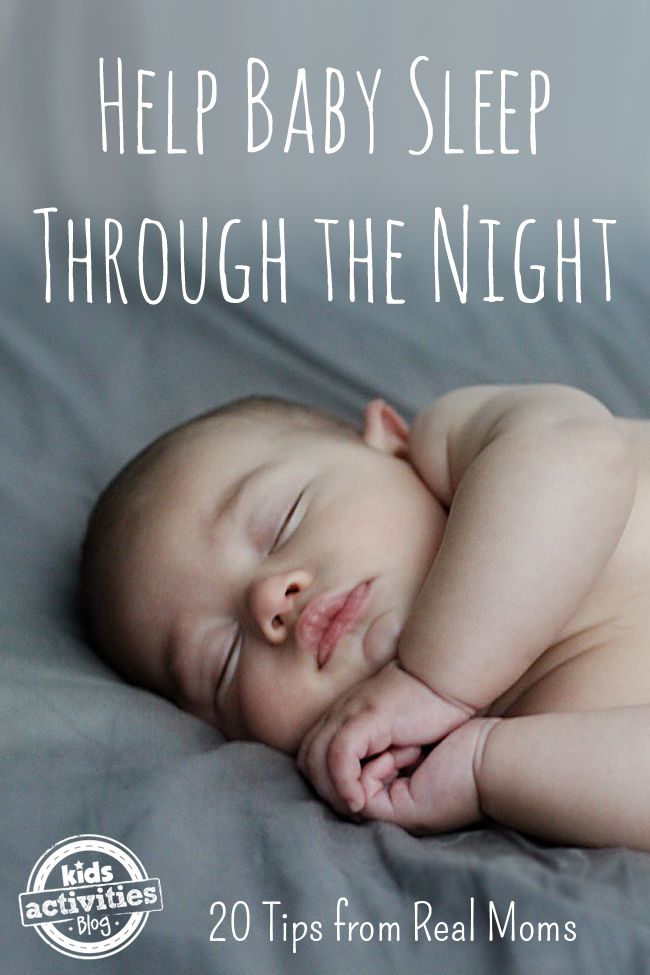 And subsequently, when he wakes up at night, which is part of the natural sleep cycle, he will worry and cry instead of falling asleep again.
And subsequently, when he wakes up at night, which is part of the natural sleep cycle, he will worry and cry instead of falling asleep again.
Conversely, if your baby learns to soothe himself before bed, he will be able to use the same skill when waking up at night.
It is important to realize right away that crying is not the goal of this sleep training method. However, "cry it out" proponents argue that this is often an inevitable side effect of self-tuning to a child's sleep. In fact, a short-term roar is a small price to pay for all the long-term benefits: a child who goes to bed with a happy smile on his face and falls asleep easily; parents who are guaranteed a quiet night's rest. How do you like this scenario? Do you only dream of peace? Well, you have a chance to change everything.
It is much easier to take a child to bed / photo The Pragmatic Parent
Examples of CIO methods
Ferber is perhaps the best-known expert to advocate the "cry it out" method, but he is not alone. Pediatrician Mark Weissbluth, author of the popular book Healthy Sleep, Happy Baby, says that crying is an integral part of helping some kids develop healthy sleep habits.
Pediatrician Mark Weissbluth, author of the popular book Healthy Sleep, Happy Baby, says that crying is an integral part of helping some kids develop healthy sleep habits.
Sleep expert Jody Mindell, who wrote the book Sleeping All Night, is called "the kind and gentle Ferber." She proposed her own variation of the technique.
Another paediatrician, Michel Cohen of New York, should not miss The New Foundations of Parenting. He believes that babies as young as 8 weeks old can be left alone in the nursery to cry as much as necessary before falling asleep.
Well, what mom can resist that? / photo Sleeping Baby Book
At the opposite end of the spectrum is the “baby wise” approach of pediatrician Robert Bucknam and his coauthor Gary Ezzo. In their book Wisdom in Raising a Child, they advise not to feed children when they themselves want to. They recommend force-feeding your baby before bed so that he does not wake up at night. In addition, the authors warn that children will definitely cry until they adjust to the schedule proposed by their parents.
It should be noted that the methods proposed by Michel Cohen and Robert Bucknam are controversial and have been criticized by both childcare experts and many parents. Also, these approaches are contrary to the recommendations of the American Academy of Pediatrics on feeding and sleep. But... There is always a "but".
I wanted to try the Ferber method. How should I do it?
First, wait until your child is ready to sleep through the night, not only physically but also emotionally. Babies usually mature at 4-6 months of age. Ferber does not specify the exact age at which to start applying his technique, since it can vary greatly depending on the individual characteristics of the child. So it's up to you to decide.
The result is worth all your efforts / photo Sleepopolis
If you are not sure if your child is ready, you can always take a “test swim” or discuss it with a doctor. If you encounter a lot of resistance, wait a few weeks and try again.
Step 1. Put your baby to bed when he is sleepy but still awake.
Step 2 Say good night to your baby and leave the room. Let the baby cry for a certain period of time.
Step 3. Return to the room for 1-2 minutes to pet and soothe the baby. Do not turn on the light while doing this. Your voice should be as quiet and soothing as possible. Exit the room again. Despite the fact that he is still awake and even crying.
Step 4. Return to the nursery again and stay with the child a little longer than the first time. Repeat this "exercise", each time leaving the room for a longer time. At the same time, staying in the nursery should not be delayed longer than 2 minutes.
Step 5. Leave the room until the baby is asleep.
Step 6. If your child wakes up again, follow the same procedure, gradually increasing the intervals between visits.
Step 7. Every night, increase the time intervals between visits to the nursery. Ferber claims that in most cases, the child will fall asleep in his room on his own by the third or fourth night.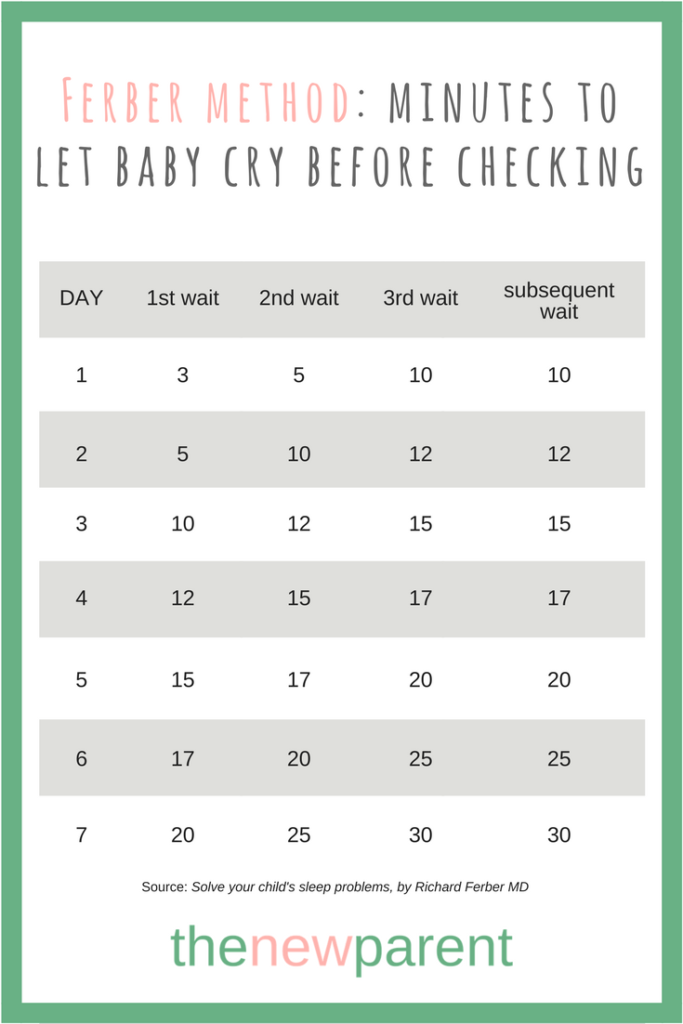 The maximum period is a week.
The maximum period is a week.
How long should a child be left alone in a room?
Ferber suggests the following intervals in his book:
First night: first time out for 3 minutes, second time out for 5 minutes, third time and all subsequent times out for 10 minutes.
Second night: leave the child for 5 minutes, then 10 minutes, then 12 minutes.
Subsequent nights: gradually increase the intervals, taking into account the reaction of the child.
A child must love his bed / photo Kveller
Practical tips for testing the “cry it out” method from parents and experts
Lay the foundation for success. For example, getting ready for bed might include bathing, reading a book, or a lullaby. The child will know exactly what to expect.
Develop a plan. Make sure you and your partner are emotionally prepared before starting sleep training.
Follow the plan. When your child wakes you up at 2 am, you may be tempted to go astray. But in this case, all the work will be done in vain. You can pause the program if you find that your child is simply not physically or emotionally ready.
But in this case, all the work will be done in vain. You can pause the program if you find that your child is simply not physically or emotionally ready.
Get ready for sleepless nights. Schedule your first CIO night when you're not planning anything. For example, if you work all week, it's best to start on Friday.
Be prepared for remorse. What parent can calmly listen to his child crying? This is real flour. Therefore, during periods of waiting, when you leave the nursery, and the child begins to cry, go to another part of the apartment or listen to music on headphones. The first week may seem like hell for you, but try to relax, because when it's over, your family will sleep as soundly as it is peaceful.
Only team work. During waiting periods, do something nice with your partner. Come up with something yourself. If after a while you realize that the baby's crying is unbearable, let your partner take control of everything. Next time you will take over the case, giving your spouse a rest.
Customize the method for you. If you want to try this method but find it too harsh, you can take the gentle approach. For example, you can stretch the seven-day Ferber program over 14 days, increasing the time intervals through the night.
Be prepared for relapses. Don't think that by the end of your sleep training you will solve the problem. Your child's sleep may regress periodically, for example, when they get sick or while traveling.
Reading at night as part of bedtime / photo Chicago Tribune
Does the "cry it out" method work?
For some, this method is just a salvation, because it works the first time. Many parents say that the child continues to cry, but the promised sleep does not come. Then it's time to try something else. It is natural that one method works differently in different families. No one approach to the problem of children's sleep will work the same way for everyone. And even if CIO works with your first child, it won't work with your second.
Parent feedback
"I have two children. The first child never screamed, because before going to bed and during awakenings, we always lulled him, sang, did our best. But with my second child, I decided to try the controlled crying method, and after a night it worked. Today my daughter is a year old, she goes to bed without any problems and never cries at night. My husband was against it, but now our family is happy.” - Lisa.
“My daughter woke up every hour and when she was 7 months old I decided to let her cry. After 3-4 weeks, we completed the sleep training. Now my daughter sleeps about 10 hours a night and loves her crib. And how much energy does she have for games after that! — Samantha.
"My friends are Ferber junkies." They recommended the "cry it out" method to me, and I went against my own instincts. The son was supposed to sleep peacefully in a week, but instead he cried for 3 hours on the third night. This is very individual, and you should not expect that this technique works with all children. — Kelly.
— Kelly.
“We tried the Ferber method with our daughter at 6 months old. The first night was terrible. The second one was faster. The third night was worse than the first. Now the daughter sleeps with us and we are all happy. I still blame myself for those three terrible nights.” - Loving mother.
Don't believe anyone who says it's easy / photo HuffPost
Why do some people oppose the "cry it out" method?
Many parents and educators say that you should not let a child cry and not respond to his tears in any way. According to them, this can jeopardize the child's trust in his parents and, therefore, his sense of security.
In response to such fears, Ferber says that a child who receives a lot of attention and love during the day can stay on his own at night and cry a little without damage to health or psyche.
“A small child does not yet know what is best for him, and he may cry if he does not get what he wants,” writes Ferber. “If he wanted to play with a sharp knife, you would naturally not give him such a dangerous “toy”, no matter how much he cried. In doing so, you would not feel guilty and would not worry about the psychological consequences. An abnormal sleep pattern can be as harmful to your child as a sharp knife.”
“If he wanted to play with a sharp knife, you would naturally not give him such a dangerous “toy”, no matter how much he cried. In doing so, you would not feel guilty and would not worry about the psychological consequences. An abnormal sleep pattern can be as harmful to your child as a sharp knife.”
The mere mention of the "cry it out" method can cause heated debate between parents, pediatricians and psychologists. Critics of the method say it can lead to digestive problems and even damage to synapses in the brain. Adherents speak of the ridiculousness of such conclusions. Craig Canapari, M.D., associate professor of pediatrics and director of the sleep medicine program at Yale School of Medicine, laughs: “Honestly, this technique would be really dangerous if babies got brain damage every time they cry. They're crying all the time. I think "cry it out" has a right to exist."
In the end, it is up to you to decide whether this method is justified for your child. In the struggle for survival, all means are good. And if sleep is pleasure, then you have to pay for any pleasure. Someday you will definitely understand that sleep is a plane in which you can always fly business class.
In the struggle for survival, all means are good. And if sleep is pleasure, then you have to pay for any pleasure. Someday you will definitely understand that sleep is a plane in which you can always fly business class.
Author http://www.twins.org.ua
Share
Share
Share
I am against this method. It is not in Nature for a mother to make her child suffer! It hurts both the mother and the child.
Do you want your child to fall asleep faster? Develop a specific sleep scenario. For some children, it is even enough to eat, then listen to a lullaby on the phone!
I think that you have children who cannot fall asleep for 1.5 hours, they simply do not have a script for falling asleep. It works already at the level of instincts!!
I turn on the same music to the child, and it already acts on the level of instincts.
Reply
I am teaching my second child (1. 2 years old) using this method. Helped right away! From 4 a.m. he sleeps all night without waking up. From 21-8 in the morning. Happiness has no limit. Today is day 11. Somehow there was a strong cry, but fell asleep in one approach. The first night is hard. It worked for me with both daughters, but I am convinced that children are different. Good luck to all!
2 years old) using this method. Helped right away! From 4 a.m. he sleeps all night without waking up. From 21-8 in the morning. Happiness has no limit. Today is day 11. Somehow there was a strong cry, but fell asleep in one approach. The first night is hard. It worked for me with both daughters, but I am convinced that children are different. Good luck to all!
Reply
What a terrible technique! A child under 3 years old definitely needs his mother's warmth, hugs, affection!
Reply
Good evening, we tried this method one evening, the child never yelled like with this method. Moreover, we still depend on the breast. How can you think of that.
Reply
Children falling asleep using this technique, Welcome to IT.
Reply
Child abuse? And you have twins and jump with them 24/7.
This will be a mockery of the parents. Even in two with his wife, put them down for 1.5 hours in the evening, then if they wake up at night for 2 hours, they still jump and during the day another 0.5-1 hour. A shameful waste of time.
Basically two camps of commentators.
1 camp, of course, the method is supported and, of course, only enthusiastic comments are left.
Camp 2 has gone all out and basically puts pressure on a few aspects.
- violation of communication - trust between the child and the parent.
That is, commentators offer to indulge all the whims of their child and take a little something in their hands and calm them down. Well, we have gone through all the stages of this indulgence. From simple words to hands.
In the end, the child (one more attached to his wife, one to me) who is more attached to me simply refused to go to bed at 1.5 years old. And if you put him in bed with a demand, he yells to be picked up. REQUEST! and only with your favorite blanket and nothing else. It is simply impossible to put in a bed, a terrible hysteria begins.
That is, the child has reached the state of manipulation of the parent.
The second child behaves in a simpler way, but in general, in relation to his wife, the same way. It is possible to lay down only after long motion sickness on the hands. My blood, which is attached to me, can only be laid in a deep sleep. It's about an hour on hand.
- the second point that is being actively discussed is tantrums, fainting due to hysterics, mental disorders.
Your mother. Your child can hysteria and cry from anything. From colic at an early age to a thorn in the foot on the beach. Will you wipe your child's drool every time?
I was a mother's boy myself. And until the age of 25, he remained like that, stealing money from his father, and his mother bought cigarettes, fed and clothed him. Until one day he found himself in conditions of survival without papa and mama. After that, the world turned upside down. Now I am a financially secure person, absolutely independent and independent of any circumstances.
And until the age of 25, he remained like that, stealing money from his father, and his mother bought cigarettes, fed and clothed him. Until one day he found himself in conditions of survival without papa and mama. After that, the world turned upside down. Now I am a financially secure person, absolutely independent and independent of any circumstances.
I have a wonderful wife and two wonderful children.
What future do you want for your children? That's the way I was before 25 and would probably be the same up to 50? Or maybe you want your children to be independent from an early age and not rush a little on your neck, a little something goes wrong?
The method is stupid, but it works. Stress is really useless for a child, but you don’t torment him week after week. We are talking about 1-3 days of real stress for the child.
We applied this method abruptly and without returning to the room.
1.5 hours we tried to put them down. Then he and his wife defiantly left the room and that was it.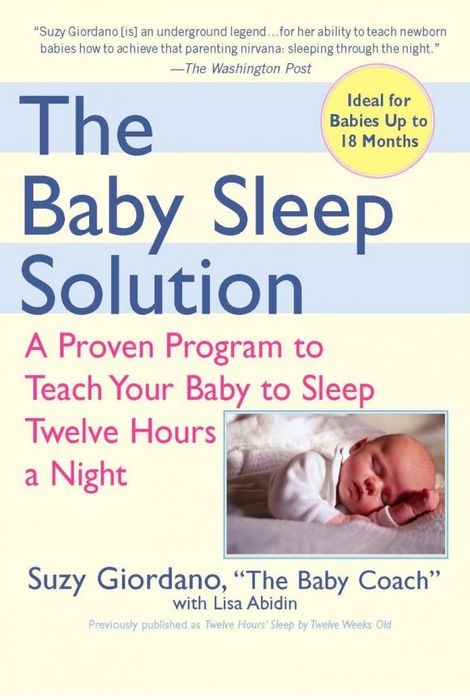 Yelled for 30 minutes. Then they slashed.
Yelled for 30 minutes. Then they slashed.
Yes, the first evening and daytime falling asleep was hard for them.
But each subsequent day they calmed down much faster and already without tantrums, but only with whining. And sleep became stronger and better.
After 3 days of literally this method, children already after 30 minutes sleep a sound and healthy sleep.
I would like to note that our children sleep quite well at night. We spend a lot of time with our children throughout the day. So they are not deprived of attention. At night, if we wake up, we are still rocking in our arms or in the crib if we quickly reacted to whims.
An independent child really learns to control his emotions on his own, falling asleep and healthy sleep for a child is a real necessity.
So to sacrifice 2 days of hard stress and get a child falling asleep on his own or babysitting him for at least 5-6 years is the choice of everyone.
But do not be surprised after 40 years that your child asks for money for a bottle while sitting at the computer and playing toys or sitting in VKontakte. The fault of such upbringing will be only you.
The fault of such upbringing will be only you.
I think for the most part those who have babies of 3-12 months are aroused. The parent of such a baby is hysterical and crying like a knife to the heart. But it passes, believe me. He himself was the same. And I have two of the same age. In my case, if humane methods do not work, I have to resort to radical ones.
Sooner or later you will realize that this is not a way to jump for 5 hours with a baby. It's about 3-4 days, not months.
Reply
Here you are, adults, you somehow sleep in silence and in the dark and in a separate room and no one is sitting next to you ... so why not teach this to a child???
From this, strong personalities are formed and not amoebic little men who spit on everyone and mom runs after them and wipes this drool and apologizes ...
This is normal, you need to teach the child independence - but explain, help, talk. As the doctor writes - “let them cry and come ... make it clear that mom will come anyway, and let them cry again and come and the baby will understand that he is not alone and you can sleep peacefully”
As the doctor writes - “let them cry and come ... make it clear that mom will come anyway, and let them cry again and come and the baby will understand that he is not alone and you can sleep peacefully”
All such straight mothers mothers - give free rein to your children, and they will be calm and happy))
Reply
My daughter is 30 years old and is now the mother of a 3 month old daughter. I did not know any methods, but I really needed to go to work in the 90s. At 6 months old, I tried to leave the child alone at 20-30 to fall asleep in the crib. The first days she screamed for 30 minutes, then 15, 10, 5, then she babbled and fell asleep herself. So I made life easier for myself. Nothing, my daughter did not lag behind in development, and in the evening I felt like a free woman. Moms, from six months of the child you need to start loving yourself. Nothing will happen to your child, psychologically speaking. Take care of yourself!!!
Nothing will happen to your child, psychologically speaking. Take care of yourself!!!
Reply
I completely agree with the comments, I read the article there, they explain everything more softly, but what is the best thing to do so that the child is better ??
Reply
What kind of Kerest just read! Disgusting experiments, nothing more. Instead of providing the little man with peace and confidence that he is not alone and Mom is nearby. Some garbage to do. Let these Americans experiment on each other better
Reply
What kind of fashion did they take, as in American films, to leave tiny children in a separate room?
Reply
It has already been proven in foreign literature that this method is unacceptable and really harmful to the child. The level of the stress hormone in such children goes off scale and leads to irreversible consequences in the conditions of the formation of the psyche. Moreover, studies were conducted where they found that even if the children stopped crying with this method, as it turned out, this was due to an increased stress hormone and the “freeze or flight” reaction (that is, the children seemed to freeze). This method leads not only to the formation of distrust of the child with the closest people, but also subsequently to low stress tolerance.
The level of the stress hormone in such children goes off scale and leads to irreversible consequences in the conditions of the formation of the psyche. Moreover, studies were conducted where they found that even if the children stopped crying with this method, as it turned out, this was due to an increased stress hormone and the “freeze or flight” reaction (that is, the children seemed to freeze). This method leads not only to the formation of distrust of the child with the closest people, but also subsequently to low stress tolerance.
Reply
It seems that many do not know how to read and understand the essence of the text)) Ferber does not call on parents to torture and make their children faint, but offers a method by which both children and parents will finally be able to normalize night sleep. There is no cruelty here. You need to pause and watch the baby. And if the child does not calm down or the cry of pain / hunger, then you need to take the child in your arms.
You need to pause and watch the baby. And if the child does not calm down or the cry of pain / hunger, then you need to take the child in your arms.
Reply
This is child abuse. Do you think your parents did this? Remember that little you who was very lonely and scared in the dark in the crib. Remember how you begged your mother to come, stroke, take in your arms, kiss and give protection. Remembered? Don't do this to your children.
Reply
He will not fall asleep, but will faint from overload
Reply
However, this method is very harmful to the psyche of the child. In this method, he directly shouts "Hey, I'll water it !! At least howl, at least not howl I'll go to bed and close you" it's better to go to a child psychologist and consult with him! There used to be a psychologist who defended such a method as "do not kiss children, do not say that they are beautiful, put breakfast on and go to work, do not talk, and do not wish happy birthday! I don’t know the name for sure, but it’s very bad! We had a girl in the yard who was brought up like this, and what kind of girl is this? hysterical, and will HATE you!!!!! It is important to support LOVE IN THE FAMILY!!!🙏🏻🙏🏻❤️❤️ Do not read articles of this type!!! The site is good, but the article is not very good!👎 The child thinks: she closed me, she is crazy , he will tremble and if he is less than 6 years old he can faint from emotional overload!!0009
In this method, he directly shouts "Hey, I'll water it !! At least howl, at least not howl I'll go to bed and close you" it's better to go to a child psychologist and consult with him! There used to be a psychologist who defended such a method as "do not kiss children, do not say that they are beautiful, put breakfast on and go to work, do not talk, and do not wish happy birthday! I don’t know the name for sure, but it’s very bad! We had a girl in the yard who was brought up like this, and what kind of girl is this? hysterical, and will HATE you!!!!! It is important to support LOVE IN THE FAMILY!!!🙏🏻🙏🏻❤️❤️ Do not read articles of this type!!! The site is good, but the article is not very good!👎 The child thinks: she closed me, she is crazy , he will tremble and if he is less than 6 years old he can faint from emotional overload!!0009
Reply
on the recommendation of a therapist, the child's bed linen was changed to natural and sleep improved, very satisfied
Reply
New comment
Submit
Ferber method - Ferber method how to teach a child to sleep on their own, description
On forums and social networks, we see a lot of questions from parents who want to teach their child to sleep using the Ferber method. This approach to teaching children to fall asleep on their own always causes ambiguous and controversial comments. Someone thinks that this is a great, very effective and really working way, and some share negative experiences and even warn other parents against using it.
This approach to teaching children to fall asleep on their own always causes ambiguous and controversial comments. Someone thinks that this is a great, very effective and really working way, and some share negative experiences and even warn other parents against using it.
Let's see what is the peculiarity of this technique, what are its pros and cons and how we, the team of consultants "Sleep, Baby" treat it
Who is Ferber?
The method of working with children's sleep, proposed by the American scientist Richard Ferber, is called the Controlled Crying Method. This technique was first proposed by Amos Rolider and Ron Van Houten as a more parent-friendly alternative to "cry it out" or "cry it to sleep". The approach to sleep education was slightly modified and popularized by Richard Ferber in his 1985 book for parents.
Controlled Crying Method shows positive effects after application.
Methods were evaluated in 14 studies with a total of 748 children. All studies demonstrated a reduction in problems with putting the child to bed and/or frequency of nighttime awakenings.
Such statistics can certainly inspire parents to work on improving sleep according to the Ferber method.
Description of the technique
The Ferber technique is based on behavioral psychology, in which parents put the baby in the crib and let him cry and calm down for certain intervals of time. Parents come to the baby after a certain time interval, stay next to the baby's bed for no more than 1-2 minutes and leave again. Every night, the time intervals through which parents come to the baby increase - this is how the child learns self-soothing.
Children quite quickly catch the associative relationship - the absence of the parent's reaction to the cry and refuse to cry, due to the fact that it does not lead to the desired consequences - the parent is not suitable.
The child stops crying, falls asleep faster and sleeps without awakening.
Scheme of application of the method
First night. The time of going to bed for a night's sleep is increased by half an hour or an hour, while the time of the next morning awakening remains the same. After the ritual, you need to put the baby in the crib and leave the room for 3 minutes, regardless of whether he cries or not.
If after this time he is still crying, you need to approach, but do not pick up the baby from the crib. After that, you need to go out and stay out of the room for 5 minutes. Then log in again and log out again. The next time the interval will increase to 10 minutes, regardless of whether the baby is crying in the crib or not.
Continue to teach your baby to sleep in the same way, with 10 minute intervals, until he falls asleep. When a child wakes up at night, you should not help him calm down immediately, but wait 5-10 minutes.
Second night . The scheme is repeated, but the time intervals at which parents visit the baby increase according to the scheme:
- 5 minutes for the first check
- 10 minutes for the second check
- 12 minutes - for all subsequent visits before falling asleep.
Third and subsequent nights. Scheme: 10 minutes for the first test, 15 minutes for the second, 20 minutes for the next, even if the child is awake all this time.
Ferber's technique can be applied to healthy children older than 4 months. Provided that the child does not have increased excitability and does not experience a growth spurt.
Pros and cons of the Ferber technique
Despite the fact that there are enough opponents who oppose the Controlled Crying Method, it has an objective plus : this approach demonstrates speed and high efficiency - a pronounced effect can already be noticed on 2-5 days , the baby falls asleep faster in his crib.
In some cases, this technique can be shown as the most effective way to teach a baby to fall asleep. For example, if the mother does not sleep at all, is on the verge of a nervous breakdown and is even afraid of harming the baby. Or when one of the parents is a negative association for the child falling asleep. Or mom does not stand up to work according to the slow method at all. Provided that all relatives agree to the application of the technique, its application can be recommended.
But obvious minuses this approach is much more:
- The child cries a lot and may accumulate fatigue due to prolonged bedding
- The technique is categorically not suitable for excitable children.
- In order to consistently apply the methodology to parents and teach the child to sleep, a lot of patience and will are needed, which is difficult in conditions of general overwork.
- There are many questions about the methodology regarding attachment and its violation.

In Ferber's sleep training, the parents leave the room, leaving the baby alone to cry. For a baby, especially under the age of 12 months, crying is the only way to express their need. A child can express by crying the need for warmth, caress, safety. The baby can be lonely, scared, uncomfortable.
Ignoring these needs, parents involuntarily convey to the child the message “your needs are not interesting, the world does not need them. Be comfortable, then the world will notice and approve of you.” This message, of course, negatively affects the formation of basic trust in the world and can subsequently be expressed in two polarities: either the baby’s excessive attachment to the mother and its lack of independence in many matters, as compensation for “independence” acquired at an earlier age. So is high self-sufficiency, but along with this, high anxiety and increased emotional rigidity - detachment, coldness.
VIDEO LESSON
How to Teach Falling Asleep on Your Own?
More
Ferber method or Kim West method?
The Sleep Baby Team presents Kim West's gentle technique in Russia - the Slow Withdrawal Method. The Kim West technique has been successfully used all over the world for 20 years and has proven to be safe and effective.
The Kim West technique has been successfully used all over the world for 20 years and has proven to be safe and effective.
It is impossible to do without a single tear in the learning process - and even in the gentlest way of teaching, a child's tears are possible. The main difference between the methods is that, according to Kim West, crying is not a reaction that should be ignored, ignored. Parents who teach their baby to sleep on their own using the Slow Withdrawal Technique help the baby and do not leave him to cry alone.
What are the main differences between the methods?
PARENT HELP.
According to the Kim West technique, parents help the child if they see that he cannot cope on his own, reducing his help gradually, gradually, every few days, waiting until the baby gets used to reducing the amount of help. Ferber's approach, on the other hand, involves calming the baby on his own from the first day of training.
BABY IN THE ROOM.
According to Kim West, parents do not leave the baby alone in the room until he is ready for this. The exit from the room occurs after a few days of training, when the child is already accustomed to the gradual reduction of assistance and does not cry. According to Ferber, the parent leaves the room from the first day of training, despite crying.
RATE
Kim West's rate of change is individual and smooth. Ferber's technique has a fairly rigid universal scheme, which implies an increase in the intervals for leaving the room from the first day of use.
PLACE SLEEP.
Kim West's sleep training is available both in co-sleeping and in a crib. When using the Ferber method, the child learns to fall asleep without the help of parents only in the crib.
Which method to choose?
Every parent, every family has an overt or unspoken "parenting philosophy". Before embarking on learning in any way, it is important for parents to discuss each other's views and come to a common vision in order to be consistent and confident in putting learning into practice.
When choosing one or another method, one of the main conditions, which is the foundation of education, is the attitude of parents to this format of education. If the methodology is suitable in its philosophy to both mom and dad, they have no disagreements, both of them are determined - this is a much healthier situation for the whole family than arguing and even more so quarreling parents. In case of disagreement, the effect of training may not only decrease or not be achieved at all, but the intra-family atmosphere may worsen in general, which in turn also negatively affects the quality of sleep of all family members.
Learning to fall asleep and sleep independently has a direct relationship with the development of independence throughout the day. If the baby is very attached to mom during the day, sleep training, where mom abruptly leaves him alone, will be quite traumatic for him.
Falling asleep and sleeping on your own is a skill, and it takes time for a child to master this skill. The task of parents is to help their baby learn to fall asleep on their own, having carried out appropriate preparation: by adjusting sleep conditions, forming a sleep and wakefulness regimen, organizing a string of rituals before bedtime. In the absence of preparation, abrupt sleep training can lead to overwork, lack of sleep, and, as a result, poor health during the day and a weakening of the baby's immunity.
The task of parents is to help their baby learn to fall asleep on their own, having carried out appropriate preparation: by adjusting sleep conditions, forming a sleep and wakefulness regimen, organizing a string of rituals before bedtime. In the absence of preparation, abrupt sleep training can lead to overwork, lack of sleep, and, as a result, poor health during the day and a weakening of the baby's immunity.
When choosing any of the methods, the sequence of actions is very important so that the child learns and gets used to a certain scheme. It is important not to violate it, “not being able to withstand crying” - this will only aggravate both the emotional state of the baby and the feelings of the parents, and will also reduce the effectiveness of working with sleep.
It is important for parents to decide right away what and in what approach of teaching is acceptable to them and what is not, and, based on this, begin preparations for working with sleep and begin to implement it.


